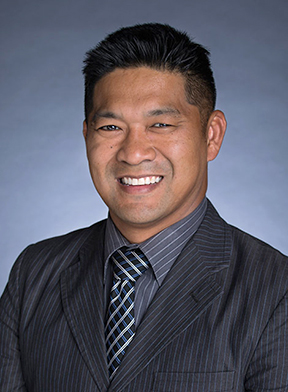By Dave Ongie, Managing Editor
Former world heavyweight boxing champion Mike Tyson once famously said that everyone has a plan until they get punched in the mouth.
Even if you never have plans to step inside a boxing ring, there is wisdom to be found in those words. Life can come at you pretty fast sometimes, and if you don’t have a firm plan in place with clear action steps, it can be hard to make good decisions in the heat of the moment.
“I think it’s so helpful to have a plan in place,” said Dr. Brian Enriquez of Holston Medical Group. “You never know what life might throw at you. It’s so easy to say, ‘Hey, something new is happening, let’s go straight to the ER.’ ”
For many, the emergency department at the hospital is the first destination that comes to mind following an accident, injury or the onset of an illness. The “ER” is synonymous with stitches, x-rays, and other medical interventions for acute medical conditions.
However, emergency departments around our region are currently swamped as the rapid spread of the delta variant of COVID-19 has put a strain on hospital personnel. Many who arrive at emergency departments in search of a quick fix for a non-life-threatening injury or illness find themselves facing extraordinarily long wait times.
“At the hospitals, they have less beds because they have less staff,” said Dr. David Moulton, Director of Quality at State of Franklin Healthcare Associates. “When they have less beds and less staff, and people pile up in the ED, there’s nowhere for them to go. On top of that, you’re having COVID with lengths of stays longer, so there are less beds turning over.
“So hospitals are struggling to expand their nursing staff to meet the needs of this influx of patients that are sick and going to stay there for a long time. They have plenty of beds in the hospital, but no staff to open them up.”
With that being said, there are still times when going straight to the emergency department is the right call. For example, anyone experiencing severe shortness of breath, signs of a stroke, chest pain, a large laceration with heavy bleeding, neck pain or other trauma should call 911 and seek emergency treatment immediately.
For everyone else, it is important to know the alternatives to the hospital emergency department and chart a course of action ahead of time for all eventualities.
Primary Care Physicians
A lot of folks don’t even consider seeking out their primary care physician when a medical situation suddenly arises. After all, the doctor’s office is a place they only go for physicals and check-ups, and it may seem unlikely the doctor would be able to see them on short notice.
But Enriquez and Moulton both said primary care physicians at HMG and SoFHA are now more equipped than ever to deal with accidents or worsening of chronic medical conditions, often in the same day.
“A lot of times, the situation is really not truly an emergency,” Enriquez said. “It’s a new event that is scary and unfamiliar, but nobody knows you better than your primary care doctor, and a lot of times your primary care doctor can fit you in that same day.”
Moulton noted that SoFHA has made great strides in improving access to care over the years, even on short notice. Many primary care physicians block off time each day to work in patients in need of immediate care, and others have nurse practitioners on hand devoted to treating emerging medical issues.
Telehealth and Virtual Triage
Telehealth has become commonplace within the past year and can be used to assess patients to help determine the course of action quickly and efficiently for a variety of issues. This method has been extremely popular among younger patients, but patients of all ages are catching on to the time saving technology, especially with COVID cases increasing.
“We also offer telemedicine for patients who are less comfortable with the idea of venturing out as we’re watching COVID numbers rise,” Enriquez said.
Telehealth is an excellent way for a physician to assess whether a patient exhibiting symptoms needs to get tested for COVID. Moulton said the system SoFHA has put in place includes telehealth visits as well as nurses who can do triage over the phone, and that has improved access to care. A drive-through COVID testing option has also helped ease the strain on local hospitals.
“It’s really important for the patients to understand the systems at the practice they’re visiting,” Moulton said.
Walk-in Clinics and Urgent Care
When you need more immediate care than your primary care physician can provide, walk-in clinics and urgent care are two wonderful options, and HMG and SoFHA both offer those options to their patients.
Enriquez said HMG’s Urgent Care facilities not only save patients time and money in most cases, but they also provide a better continuity of care since records are shared seamlessly between HMG’s primary care physicians and HMG’s urgent care.
“Why the urgent care exists is to be that extra arm to your primary care physician when they’re not available to you,” Enriquez said. “We can kind of jump into their place and communicate everything that happened in the visit to your primary care doctor, and we get to take a peek into everything your primary care might have written about you in the past. We’re very familiar with your history in the urgent care before we even walk into the room.”
The records of SoFHA patients are also available at the provider’s walk-in clinic, allowing for better continuity of care. Both HMG and SoFHA’s facilities offer extended hours on weekdays as well as weekend availability.
Moreover, these facilities can treat medical conditions like skin infections, urinary tract infections, allergic reactions, coughs, colds, ear aches and sore throats. They can even splint minor breaks and perform a variety of medical tests to quickly diagnose and treat acute medical problems.
If you don’t have a plan in place to deal with the next non-life-threatening emergency your family will face, Enriquez and Moulton both urge you to visit your healthcare provider’s website to explore the options available to you.





